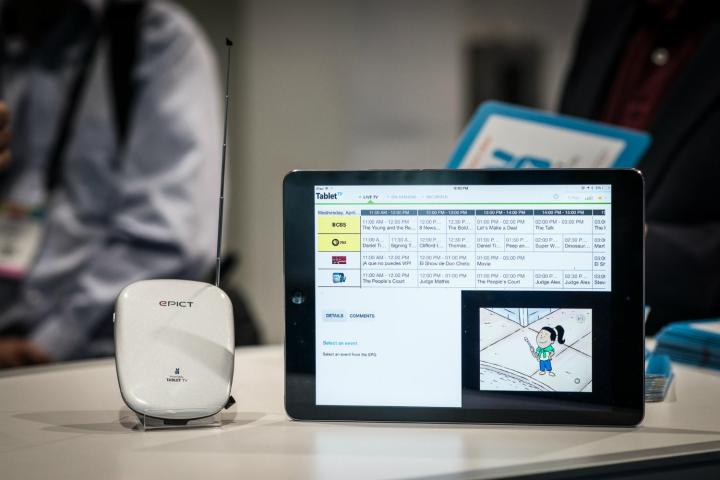
If all goes according to plan, Tablet TV will involve a portable ATSC (Advanced Television Systems Committee) tuner with a Wi-Fi transponder that can, via Tablet TV’s app, send over-the-air broadcast signals to Android tablets and iPads. It can also receive a datacasting stream embedded in the ATSC signal, which Tablet TV plans to use for support of a still-in-development video on-demand service. Consumers sign up and then receive a “kit” with the required app and the tuner device. Consumers won’t pay for the basic over-the-air content but, once developed, the VOD service will require payments via either subscription and/or pay-per-view methods.
Tablet TV has also come up with a name for the device behind the service: the T-Pod. It’s essentially a digital TV antenna, tuner, and digital recorder, bundled together into one handheld device. And as far as cost, the company is currently vacillating between $50 and $100.
The inclusion of the embedded signal is the difference that makes Tablet TV legitimate (and cheaply implemented), as opposed to Aereo’s alleged illegality.
On the other hand, broadcasters who decide to join forces with Tablet TV are expected to market the service on their own, in addition to making bandwidth available for the datacast-streamed VOD service. And for all of this, Tablet TV promises some coin: its broadcasters-in-arms will receive co-op marketing payments, a cut of the VOD profits, and – perhaps the central cash cow – incremental advertising revenue as the service’s audience base expands.
It’s not entirely clear at this point whether customers will be able to use Roku, Chromecast or other related tools to move content from their tablets to larger viewing devices, but we’ve reached out to Tablet TV and will update this article as we gather more information.
Updated by Alex Tretbar 8/27/2014 10:30 PM PST: This article has been updated to include Tablet TV’s announcement that the service is set to officially launch on Black Friday (November 28). Until then, the project will undergo beta testing beginning early next month in San Francisco.

